Ube halaya recipe that’s authentic and easy to make. You just need a few ingredients and a little patience to make the most delicious ube halaya that compares to your favourite ube jam from back home; and definitely way better than the ube jams you can find in the stores here.
(If you love ube jam, you will definitely love coconut jam!)
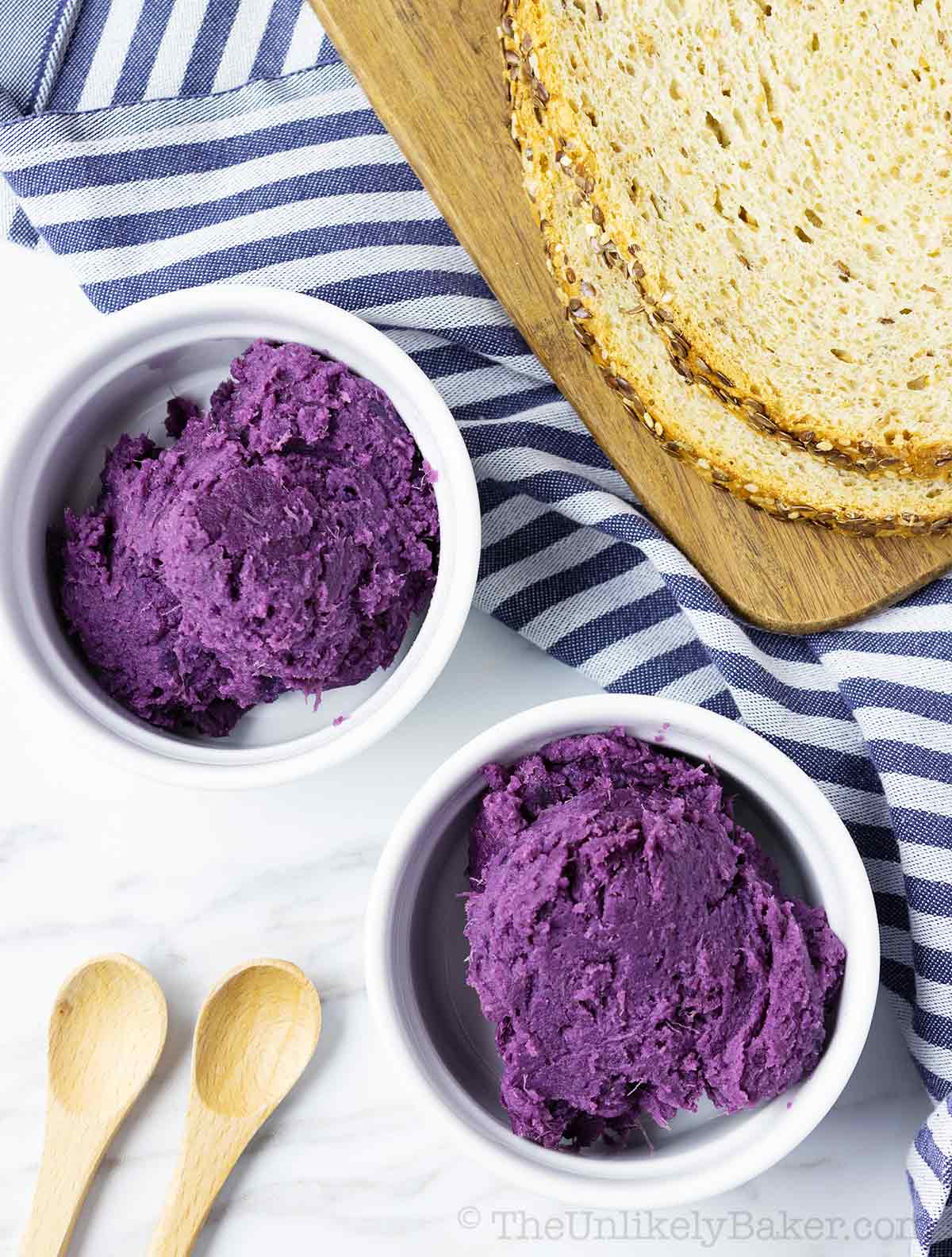
Ube is my jam. I make a lot of ube desserts, like:
- Ube cake
- Ube cheesecake
- Ube cupcakes
- Ube muffins
- Ube crinkles
- Ube bread
- Ube ice cream
- Ube pies
- Ube brownies
One thing they have in common: ube halaya (Filipino purple yam jam or simply, ube jam) is a main ingredient.
I’ve always had a steady supply of Good Shepherd Convent ube from my family in Manila. If you’re a Filipino, you know Good Shepherd ube halaya is it. There’s nothing better.
So when my ube halaya (also called halayang ube) supply ran out and the travel restrictions hit, I was stuck. I’ve tried the ube jams available to me here and frankly, they make me want to cry.
But a little hiccup won’t stop us ube fans, right? So I set out to make my own ube jam, both nervous and excited because I’ve become such an ube snob. My standards are hilariously high.
I gotta tell you though. This ube jam, it’s pretty darn close to Good Shepherd if I say so myself. It’s not the same, of course. But if you’re 10,000 miles away from home, this is as good as it gets.
So forget those ready-made, generic ube jams at the store. Make your own ube halaya jam and you won’t look back.
Why this recipe works
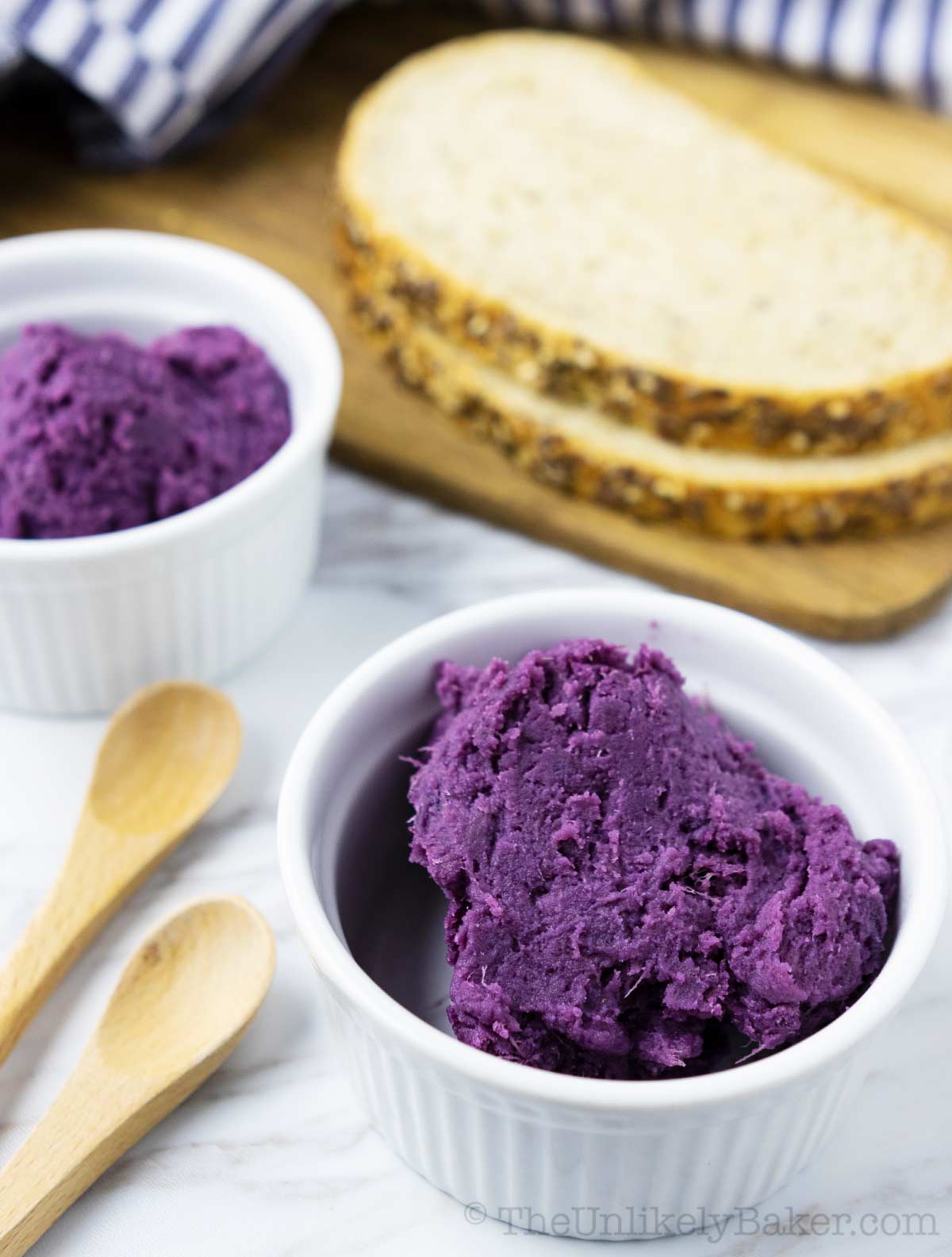
Making Filipino ube is actually very simple. It just takes a lot of stirring. And I think the stirring is the one thing that discourages people from making homemade ube jam.
But it’s really not that bad. Just think of it as toning your arms. And if our grandmas can do it….
Anyway, if you google how to make ube halaya, you’ll discover that there are a 101 ways to make it. It differs by region, by province, by family.
Some recipes include condensed milk, some don’t. Some include coconut milk, some don’t. Some cooks add a teaspoon of ube extract. Some even add cheese to theirs.
My recipe for ube halaya doesn’t contain coconut milk. When I was recipe testing, I found that coconut milk tends to overpower the flavour of ube and I wanted my halaya to be ube, pure and simple.
My final recipe also doesn’t include ube extract; I use fresh ube (called purple heart yams here) and it doesn’t need it at all. But you’ll definitely need extract if you can only find frozen grated ube just to pump up the ube flavour.
The traditional way to make halayang ube is to grate cooked ube but you know me, I’m a really lazy cook so I mash mine instead. There are pros and cons to mashing vs. grating. Read the FAQs below for more info.
How to make
On to making ube halaya we go!
Ingredients
To make homemade ube halaya, you’ll need:
- Fresh ube or Filipino purple yam (if not available, frozen grated ube will work in a pinch)
- Evaporated milk
- Brown sugar
- Condensed milk
- Salt
- Unsalted butter
Tools you’ll need
You don’t need special tools to make ube at home.
I use our potato masher to mash the yams. If you prefer to grate them, you’ll need a cheese grater
. Other than that, you only need:
- A mixing bowl
- A pot
- A non-stick skillet or wok
- Measuring cups and spoons
Step by step photos
First let’s cook our fresh ube (if using frozen grated ube, see FAQs).

They’re irregularly sized so cut them into pieces to fit your pot.
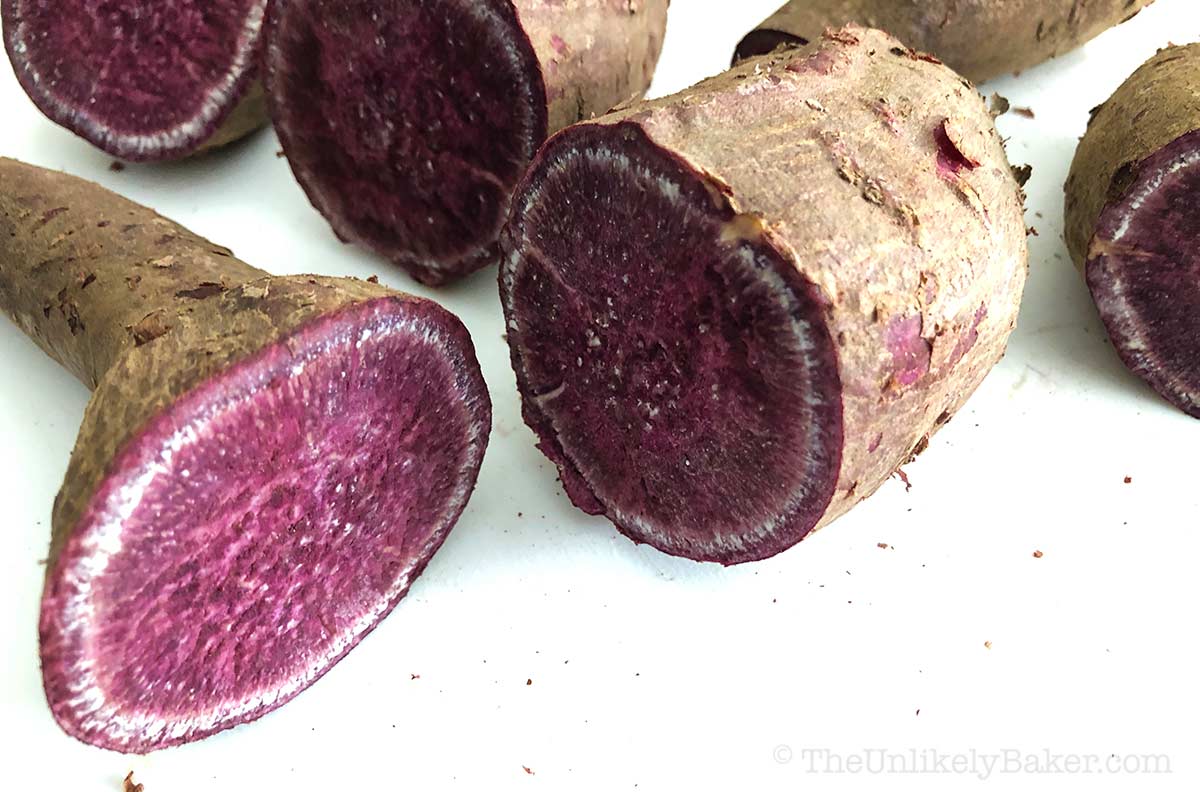
Fill your pot with water to fully cover all pieces then bring to a boil. Cook until a fork goes through the ube with little resistance (cook time about 30 minutes).
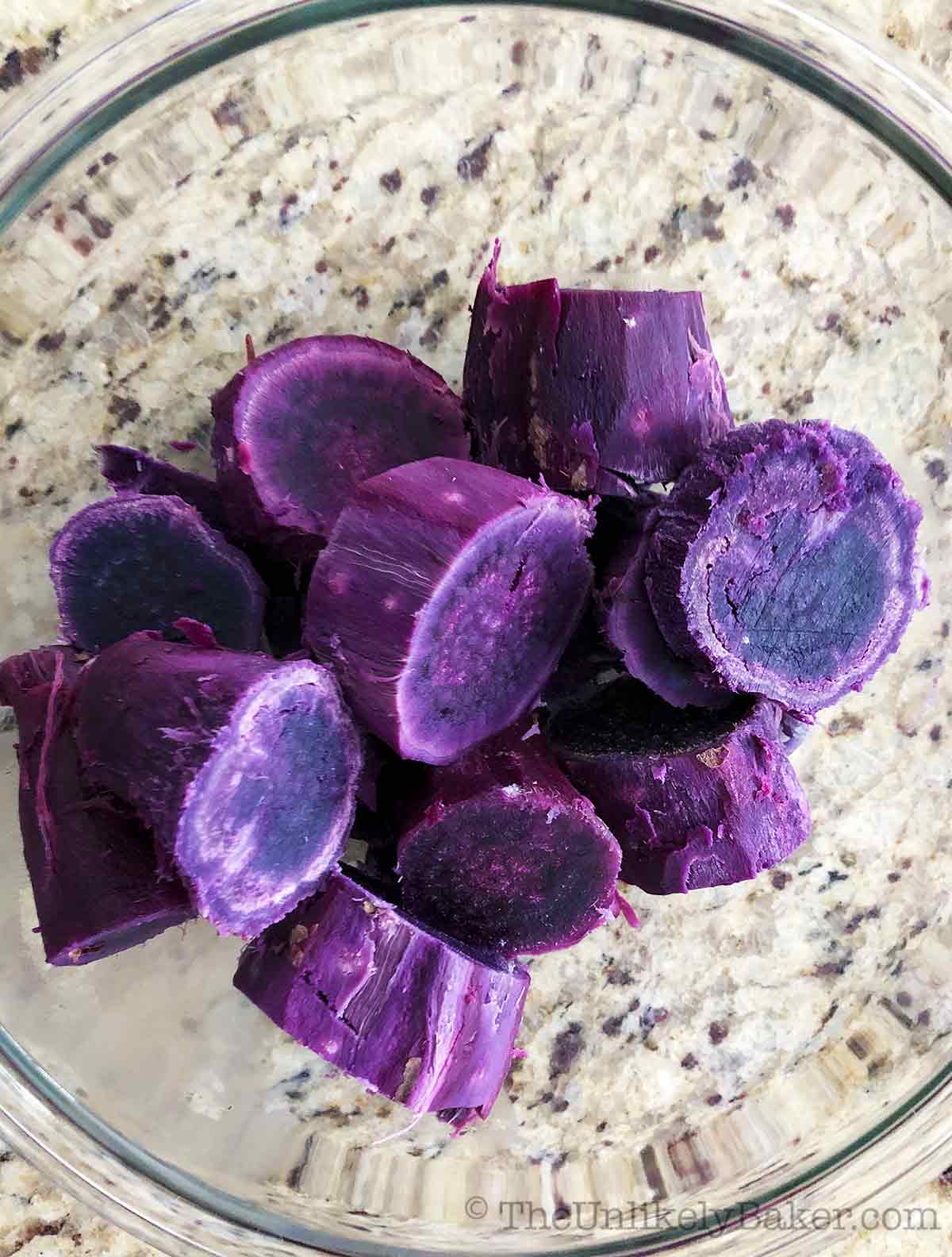
Fish them out and allow them to cool (about 10 minutes). I like to peel them and slice when they’re still a little warm.
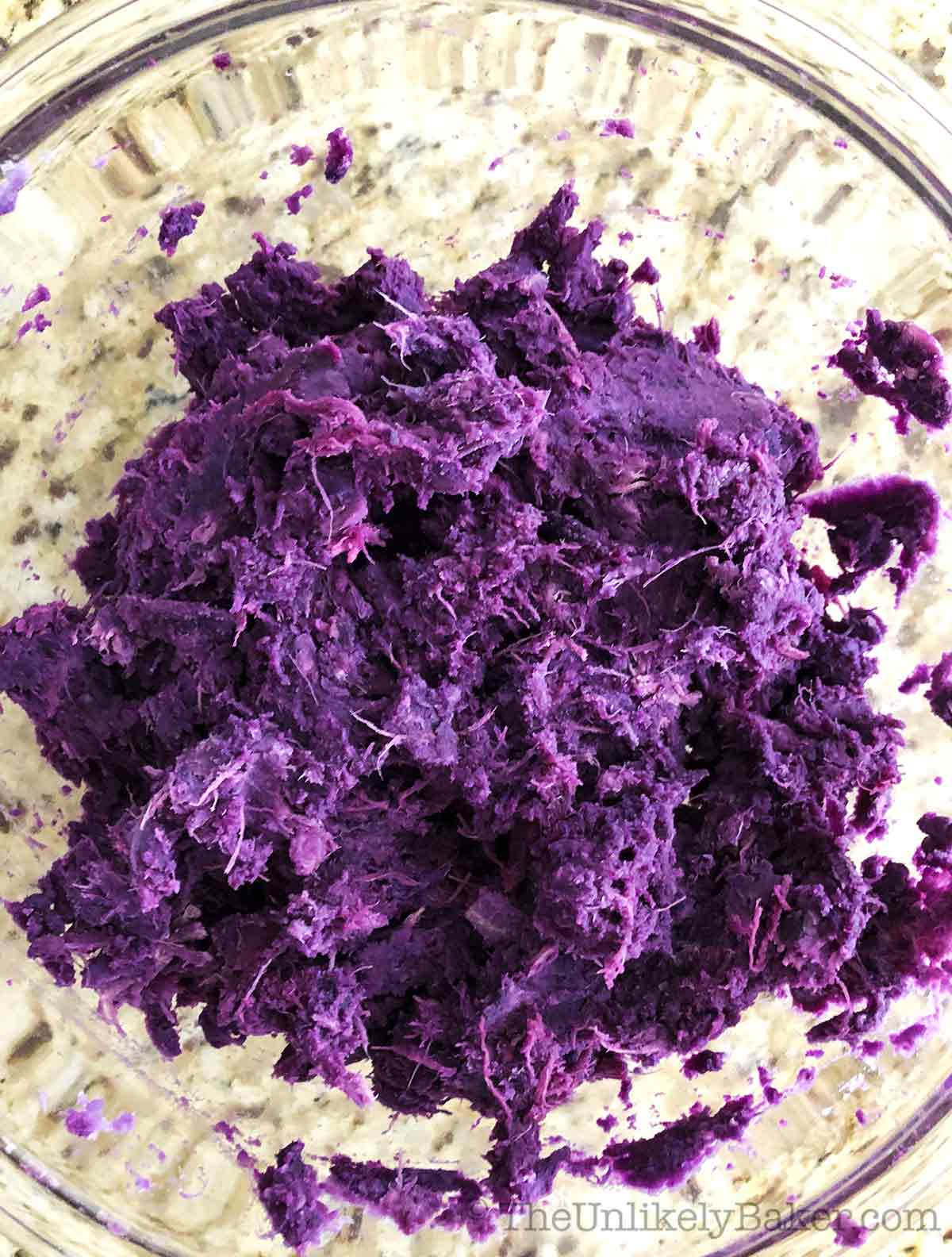
That way, I can mash them when they’re still a little warm too. I find it’s easier that way (if you prefer to grate your ube, see FAQs).
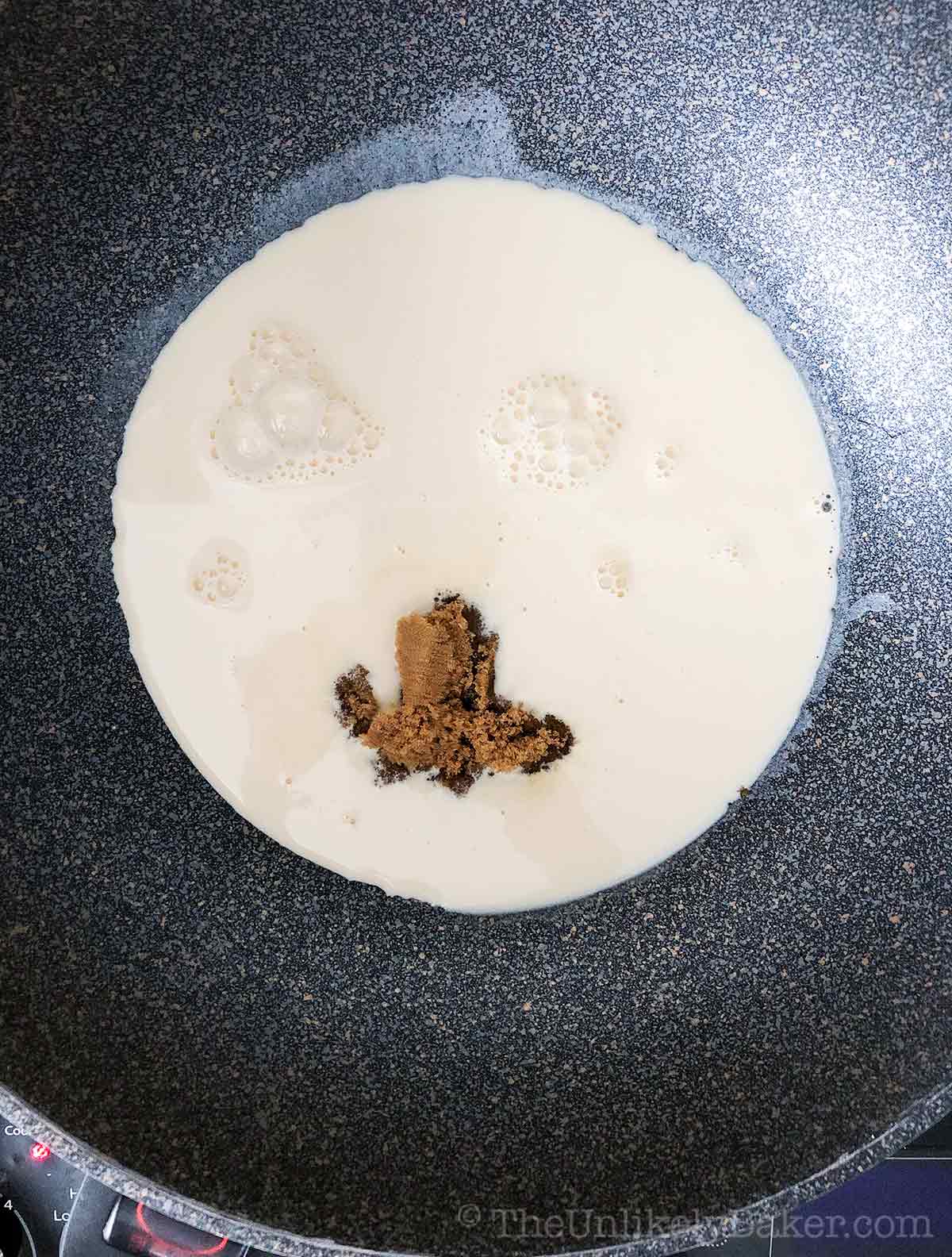
In a large non-stick skillet or wok on medium heat, combine and stir evaporated milk and brown sugar until the sugar is dissolved.
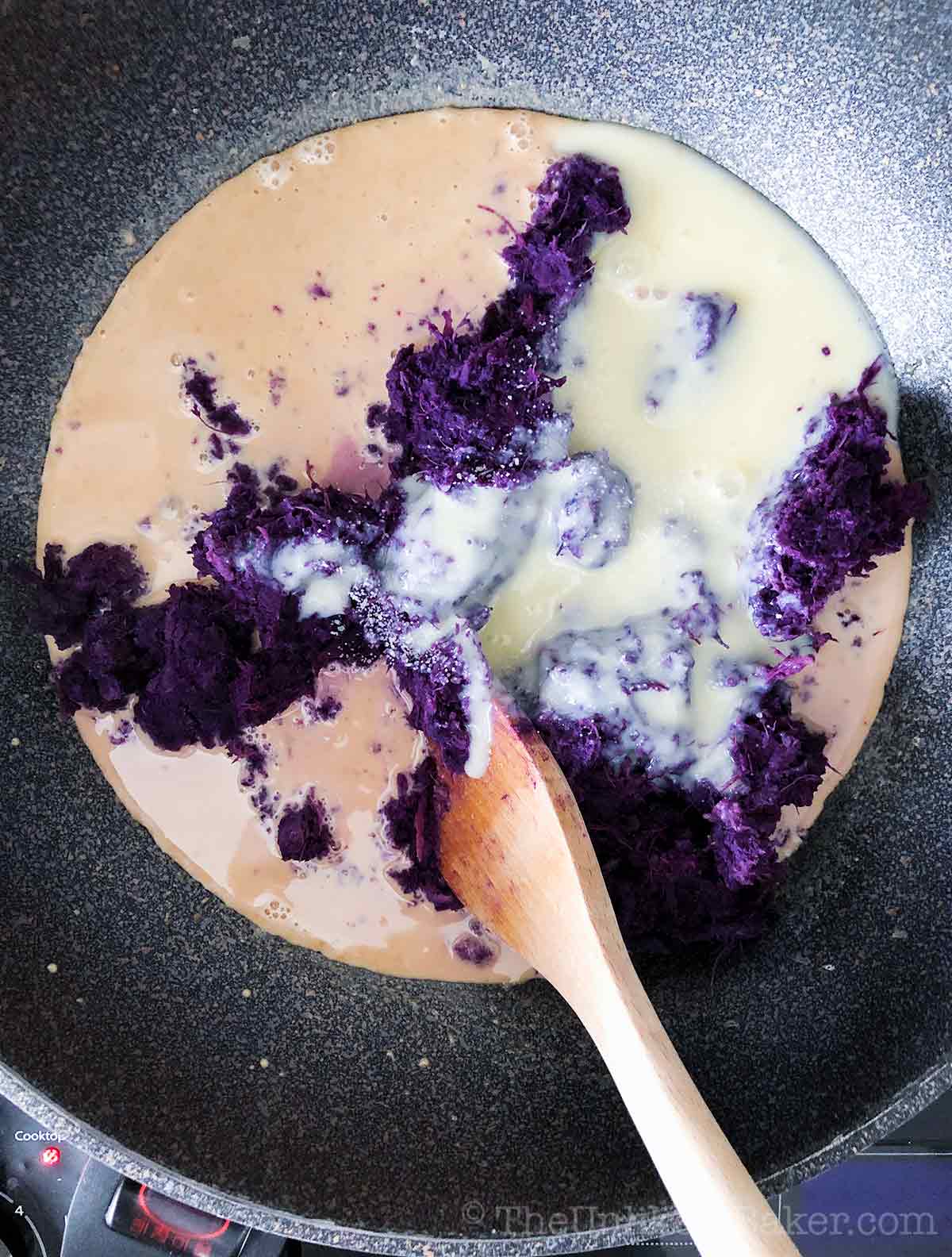
Then add mashed yams, condensed milk and salt.
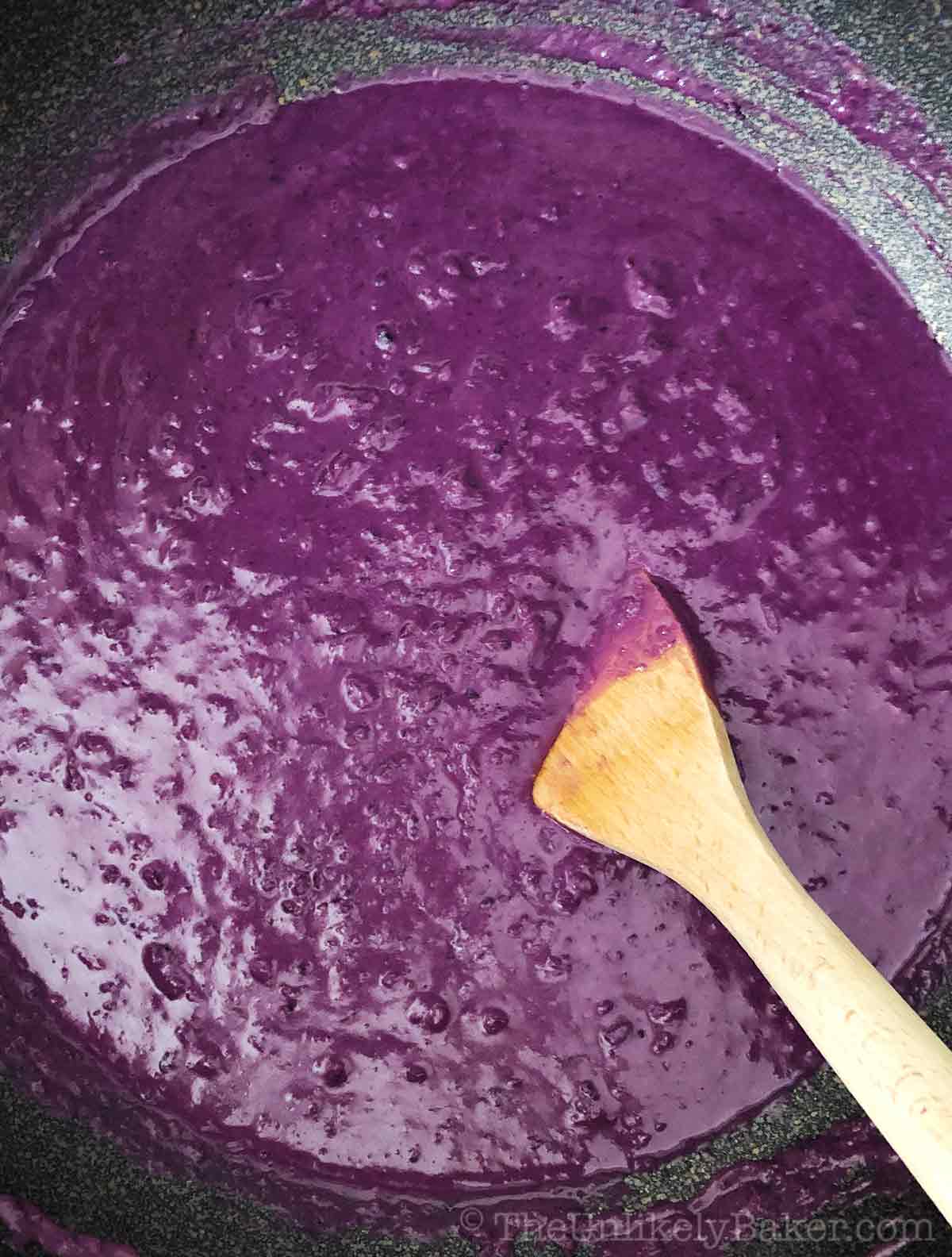
Begin stirring until the halaya thickens considerably.
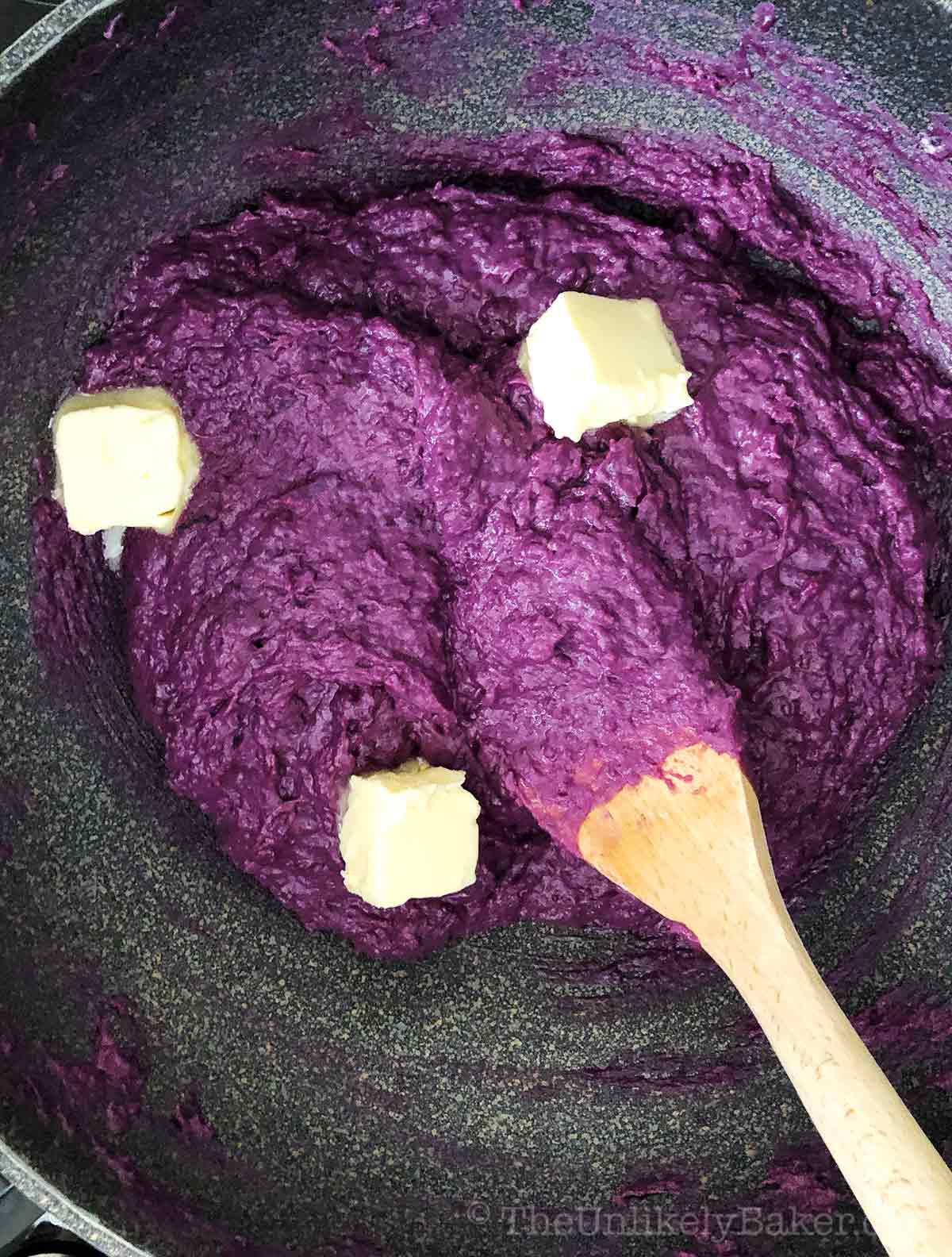
Once your jam thickens (around the 20-minute mark), add butter and stir some more until the butter melts and is incorporated.
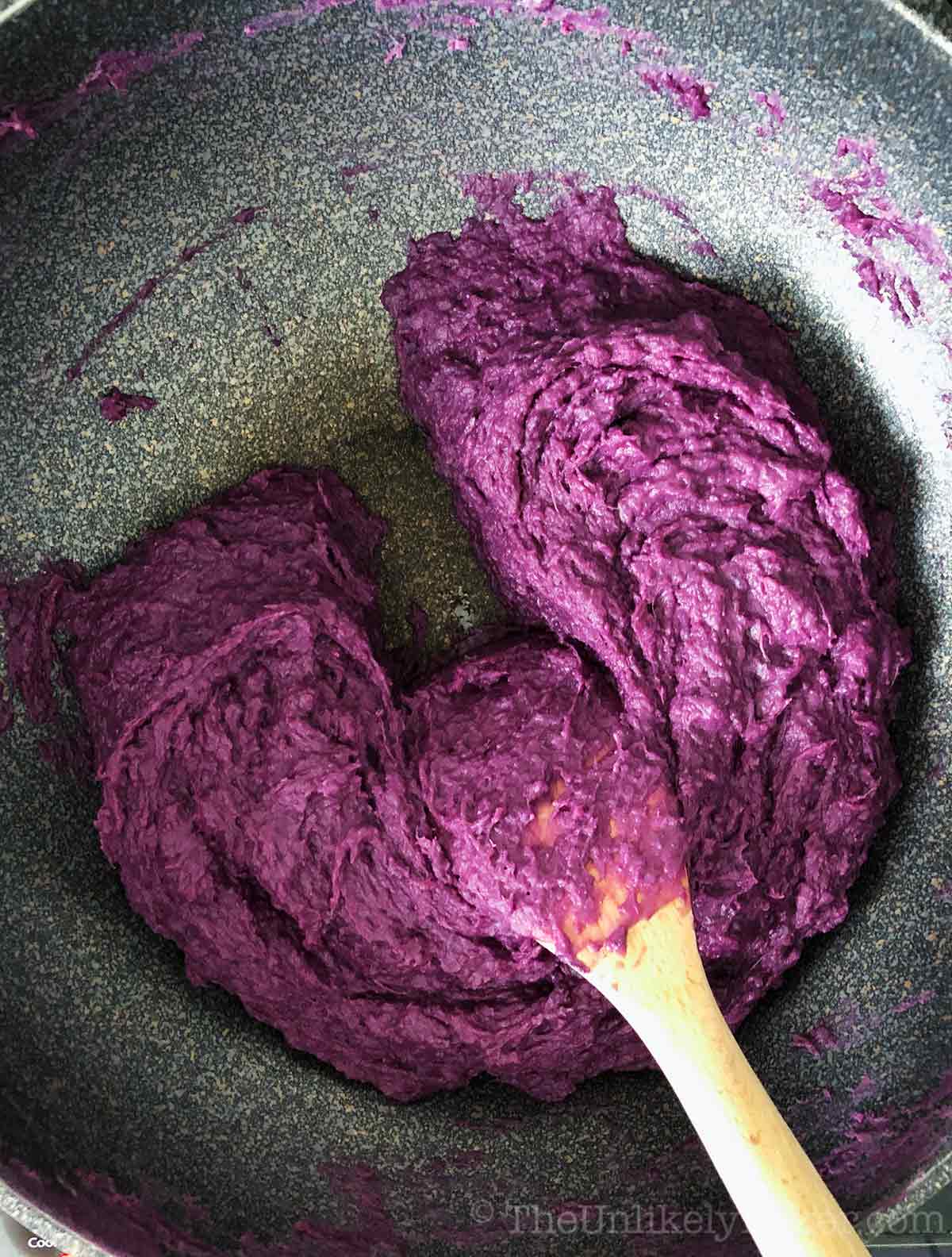
You know your ube is done when your jam pretty much stays in place when you drag your spoon down the middle of your pan (around 30 minutes).
Whether you continue stirring after this is up to you; it depends on how thick or spreadable you want your jam to be.
I usually stir until it becomes almost difficult to stir, about another 10 minutes, because I prefer ube that’s a little bit firmer, the way my lola used to make it.
If you prefer it thinner and more spreadable, stop stirring sooner. Just remember that the halaya will continue to set and thicken as it cools and when it’s chilled in the fridge.
Once you get the consistency you like, transfer to a heat-proof container, allow to cool, enjoy!
Expert tips and recipe FAQs

Easy, right? See below for more tips and FAQs to make the best ube halaya every time.
Grated ube or mashed ube — which is better
The traditional way to make halayang ube is to grate the ube. I prefer to mash it.
Mashing is easier and takes no time at all. And while the halaya remains creamy, mashed yams result to a chunkier consistency, which I like.
The only caveat is you will see (and sometimes feel in your mouth) strands of fibre in the ube.
We don’t mind this at all though. They’re soft and we don’t notice them 90% of the time.
However if, for example, you’re giving these away for Christmas and you want your homemade gifts not only to taste perfect but to look perfect too, grating might be the better option for you.
Grating will add at least another 30 minutes to your prep time but you have a better chance of getting rid of those fibre strands. Not all, but most.
What you want to do is allow the ube to cool then grate them using a cheese grater.
| PROS | CONS | |
| Mashed Ube Halaya | Quick and easy | Some fibre strands left behind |
| Grated Ube Halaya | Gets rid of most fibre strands | Adds at least 30 minutes to prep time |
Whatever method you choose, your ube will taste delicious.
Can I use frozen grated ube when making ube halaya
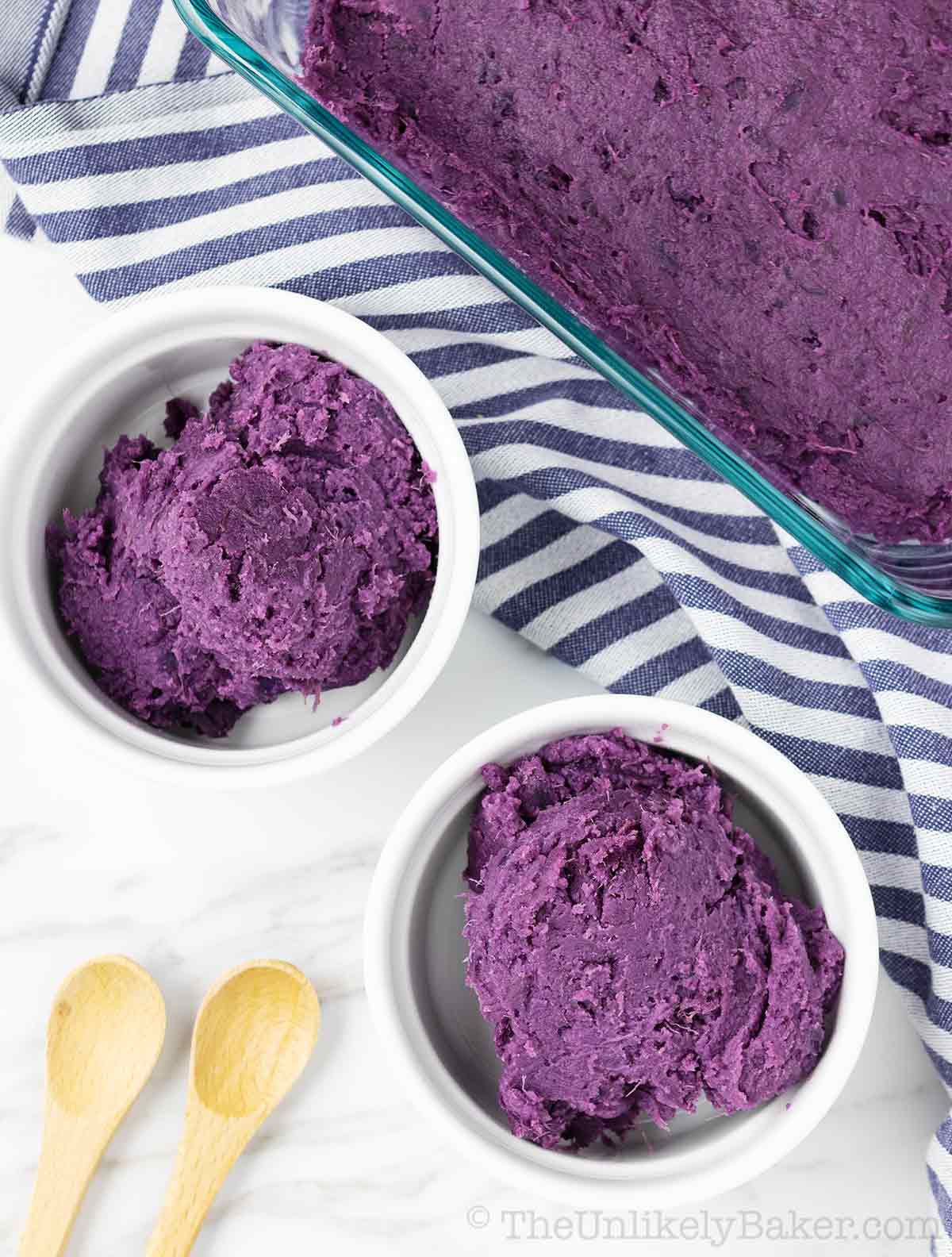
Nothing beats the taste of fresh ube but I’ve made ube jam using frozen grated ube and they’re good too. They’re also more widely available. Add a teaspoon of ube extract to enhance the ube flavour.
The only thing I don’t like is the consistency of the jam — it feels slightly gummier compared to fresh ube. But that’s a personal preference and the consistency might not bother you at all.
What matters is your cooking time will reduce by half an hour. You simply thaw the frozen grated yam and use like grated or mashed fresh yams. That’s it!
| PROS | CONS | |
| Fresh Ube | Amazing flavour Naturally vibrant purple colour | Not always available Needs to be cooked prior to using |
| Frozen Grated Ube | Quick and convenient | Lacking in real ube flavour Gummier consistency |
If given a choice though, I will always pick fresh yams.
Why does my halaya take longer to cook
Like ovens, stoves differ too. Medium heat on my stove might only correspond to low-medium heat on other stoves.
Don’t give up and just continue stirring. It should come together in about an hour or so.
Why does my ube jam look lumpy
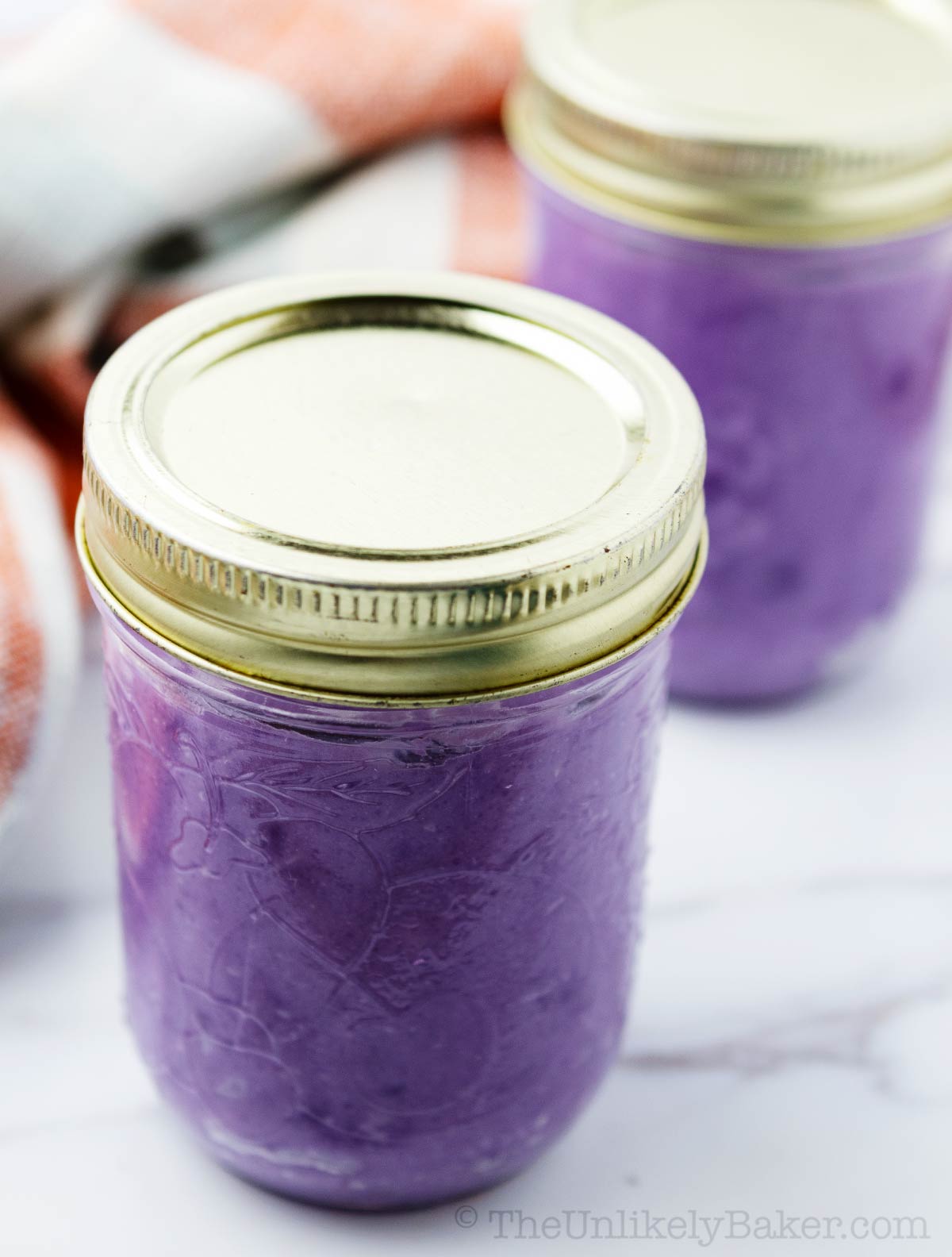
Whether you use fresh ube or frozen ube, the mixture will look grainy and lumpy while cooking. I like to mash big chunks of yam on the sides of my pan to help things along but it still won’t look like thick soup.
Just keep stirring. The jam will become smoother and creamier as it cooks, cools and sets.
In the old days, to get that really fine consistency for ube, they would sieve the grated yams through a sinamay, a kind of fabric made from abaca that’s used in making baskets and hats.
I’m not sure where to find sinamay but if you really want a fine consistency, I think a mesh sieve will do just as well. I haven’t tried this though; I like my ube jam more chunky, less jammy.
How long does ube halaya last
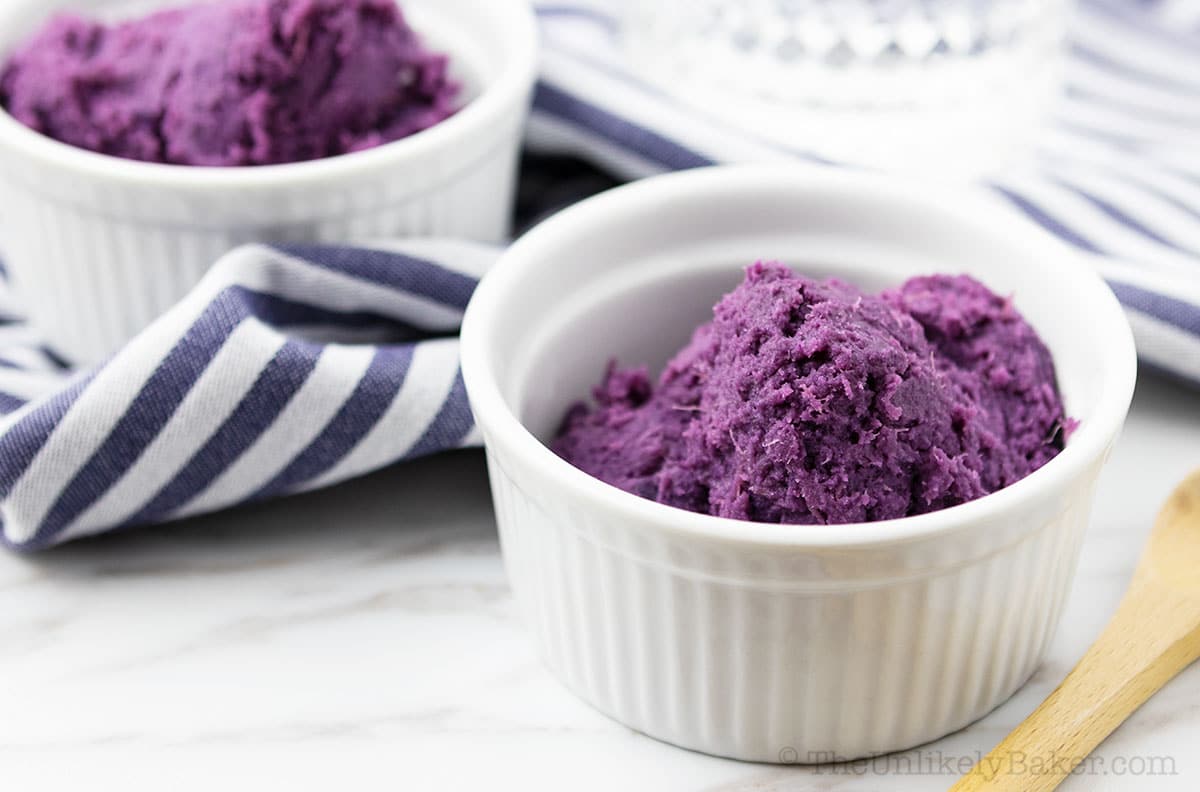
Ube halaya — whether homemade or store-bought — needs to be refrigerated.
Ube jam made from scratch doesn’t last as long as store-bought ones but will last for up to a week in the fridge. Make sure the container you use is properly washed and airtight.
Can ube halaya be frozen
Ube halaya can also be frozen.
Place it in a freeze-safe container, place cling wrap right on the surface of the ube (to prevent icicles from forming) then cover. It should last for 3-4 weeks.
To serve, thaw in the fridge or simply microwave for a few seconds.
What to eat with halayang ube
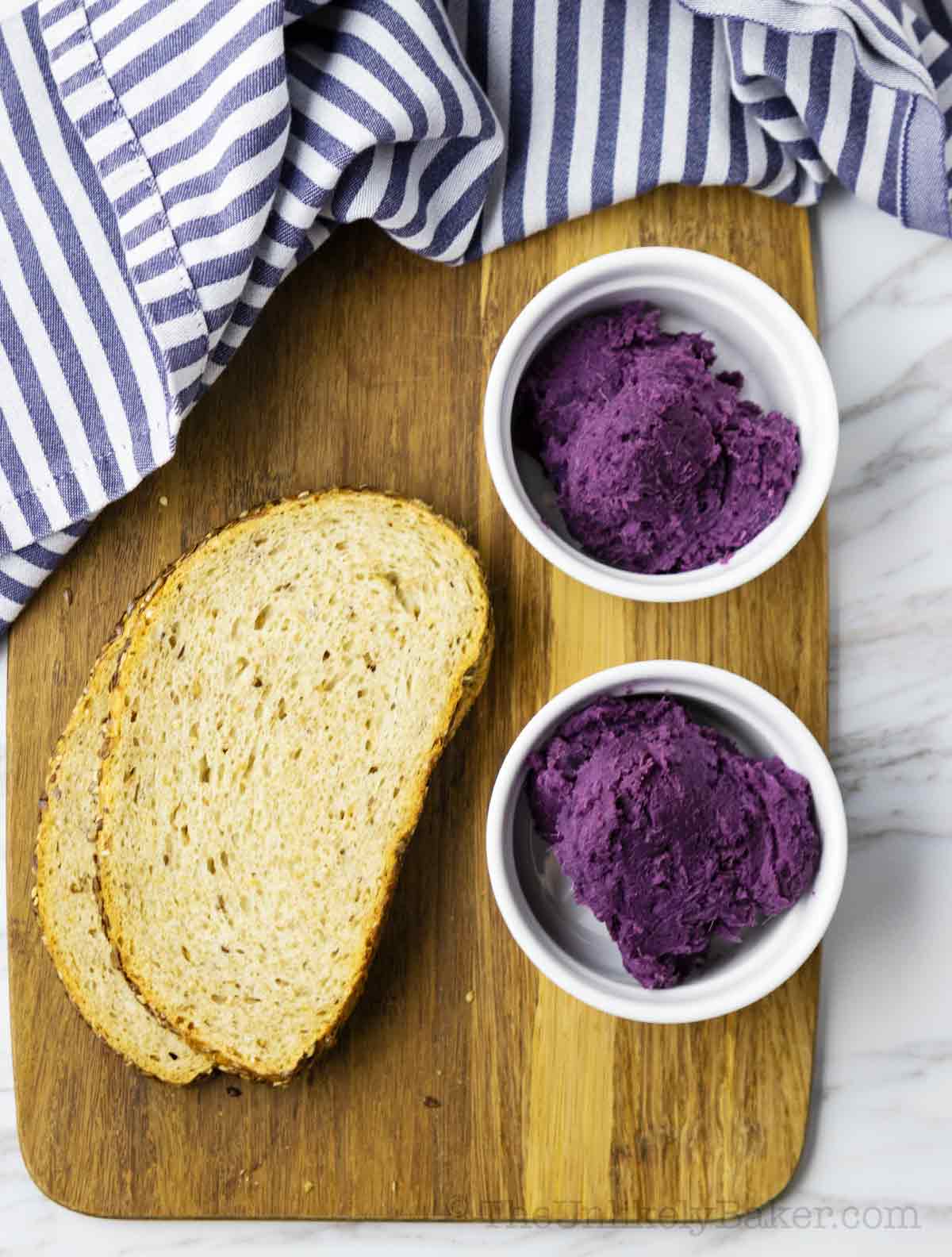
Now the most important question of all — how do we eat our homemade ube jam?
I usually just eat it straight out of the container. We also usually eat it like, well, jam, and spread it on bread like pandesal and ensaymada.
Ube halaya is amazing on ube pancakes and ube waffles too.
Filipinos also like to serve it on a platter on special occasions like Noche Buena (Christmas Eve), New Year’s Eve and Thanksgiving.
You can also bake with it like me; it’s a delicious ingredient.
However you want to enjoy ube jam, I hope you enjoy it fully. Sweet, creamy, delightfully purple. Thoroughly addicting.
It’s a beloved ingredient and delicacy in the Philippines and I’m so happy the world is getting to know it now too.
Happy stirring!
Did you make this recipe for halayang ube? I’d love to hear from you in the comments section below. If you’re looking for all things ube, check out this delicious collection of the best must-try ube desserts.
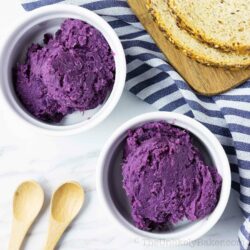
Ube Halaya Recipe
Equipment
Ingredients
- 1 12-oz can evaporated milk
- ½ cup packed brown sugar
- 2.2 lbs fresh ube or purple yam see notes
- 1 10-oz can condensed milk
- ½ tsp salt
- ¼ cup unsalted butter softened and cubed
Instructions
- Cut ube or fresh yams into pieces so it fits your pot. Fill your pot with water to fully cover all pieces then bring to a boil. Cook until a fork goes through the ube with little resistance (about 30 minutes).

- Fish yams out and allow to cool (about 10 minutes). While still warm, peel then mash yams with a fork or a potato masher (see notes).

- In a large non-stick skillet or wok on medium heat, combine and stir 1 can evaporated milk and ½ cup brown sugar until the sugar is dissolved. Then add mashed yams, 1 can condensed milk and ½ tsp salt (see notes).

- Begin stirring until the halaya thickens considerably. Stir constantly otherwise your halaya will burn. Don’t be tempted to switch to high heat either. Medium heat is the hottest you should go. Slow and steady does it.

- Once your jam thickens (around the 20-minute mark), add butter and stir some more until the butter melts and is incorporated.

- You know your ube is done when your jam pretty much stays in place when you drag your spoon down the middle of your pan (around 30 minutes). See notes.

- Transfer to a heat-proof container, allow to cool, enjoy!
Video
Notes
- This recipe yields a generous 3 cups (48 tbsp) of ube halaya.
- If using frozen grated ube, use 2 454-g packs. Thaw before using. Skip steps 1 to 3.
- If you prefer to grate your yams, simply run each piece through a cheese grater.
- If you see big chunks of yam, smush them on the sides of your pan.
- Whether you continue stirring after the ube jam is cooked is up to you; it depends on how thick or spreadable you want your jam to be. I usually stir until it becomes almost difficult to stir, another 10 minutes. Just remember that the halaya will continue to set and thicken as it cools and when it’s chilled in the fridge.
- See post for the complete step-by-step photos as well as cooking tips.
Nutrition
Nutritional information are estimates only.

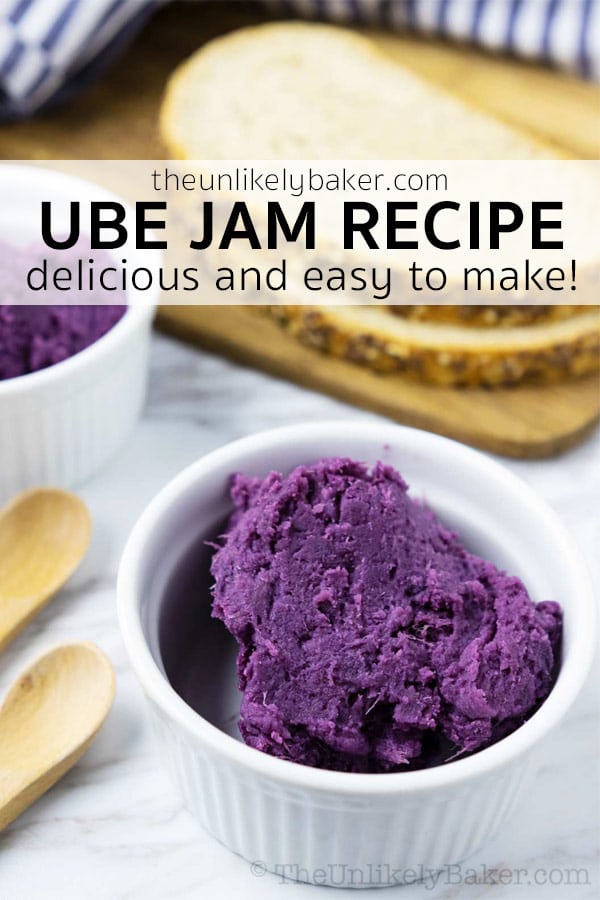
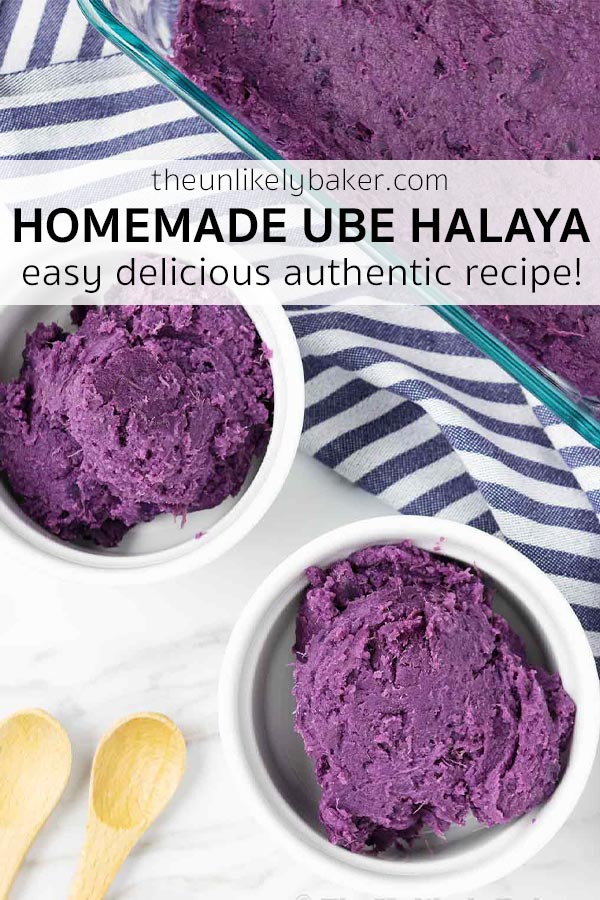
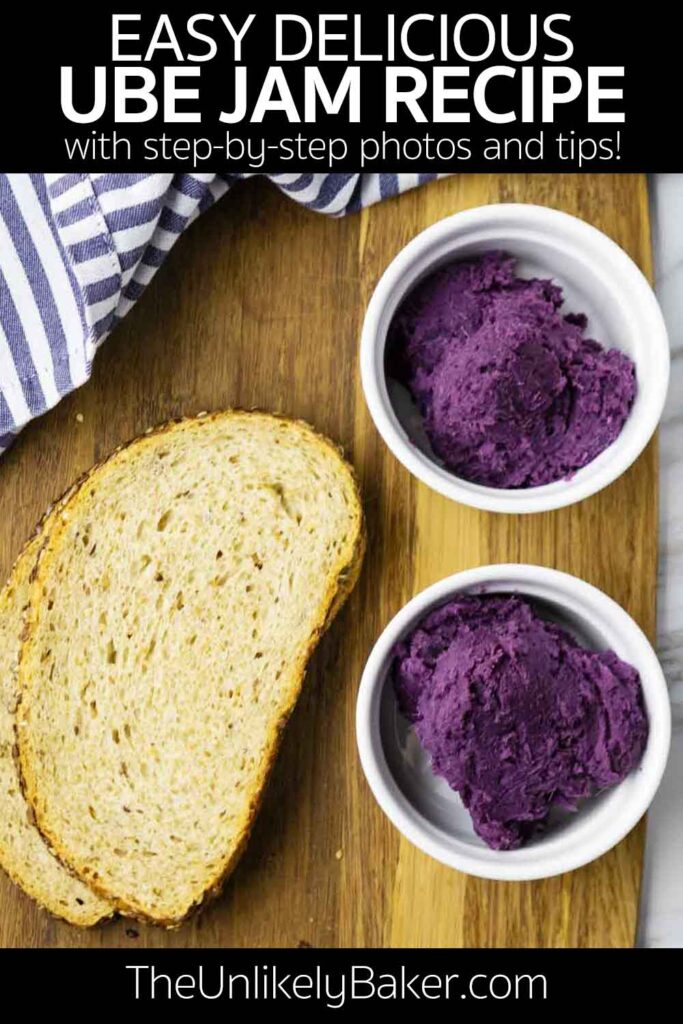
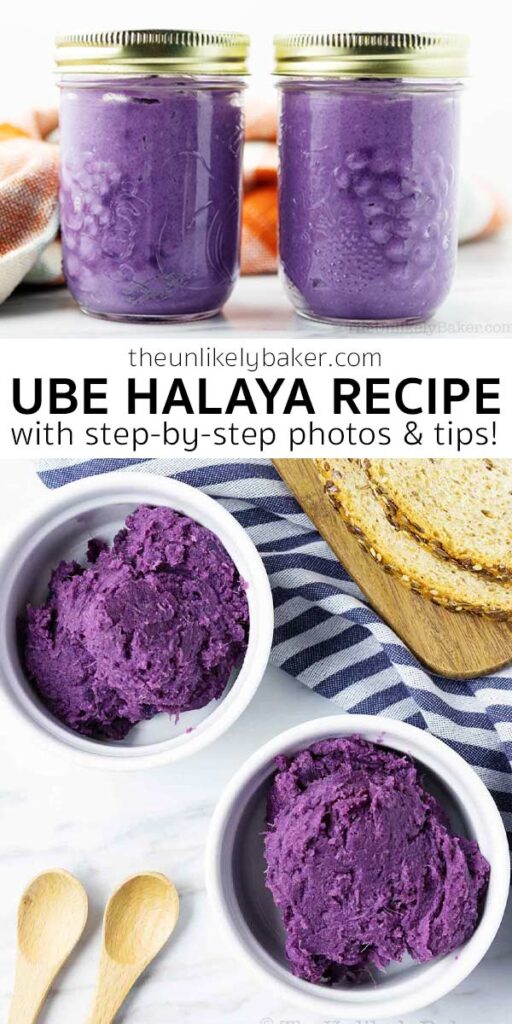
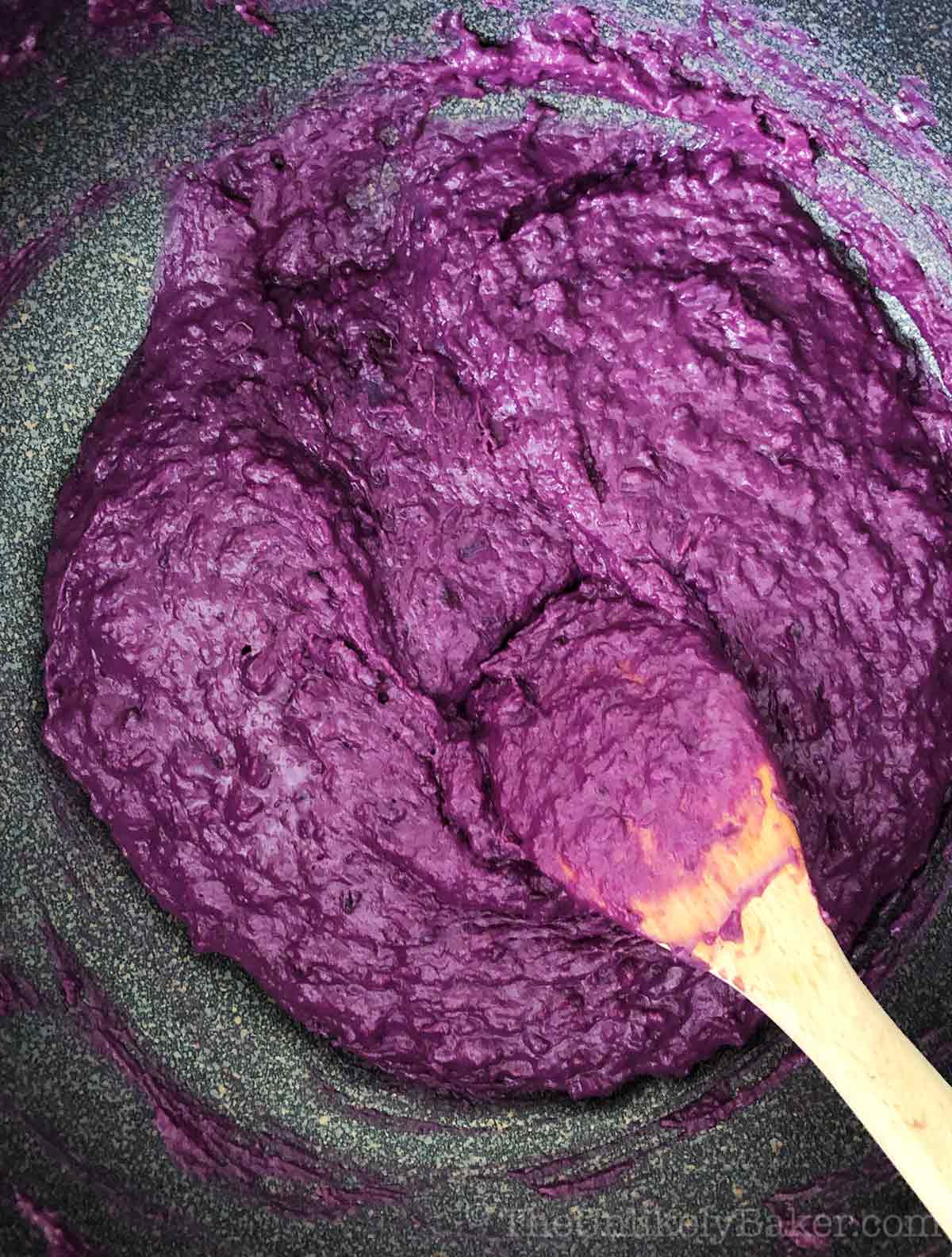
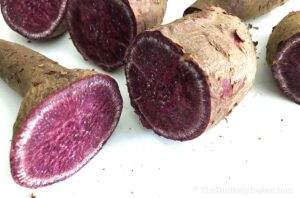
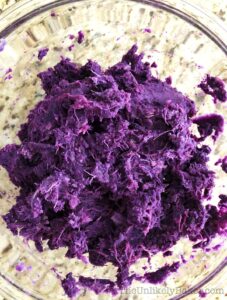
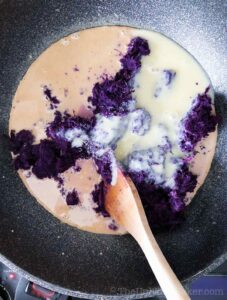
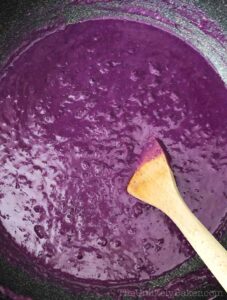
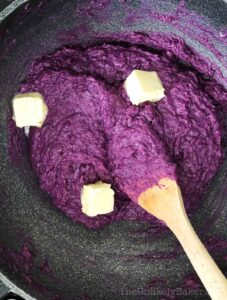
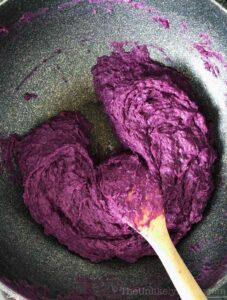
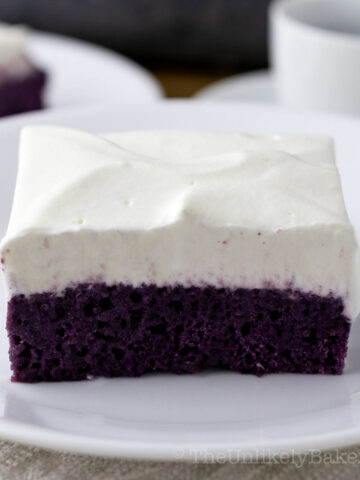
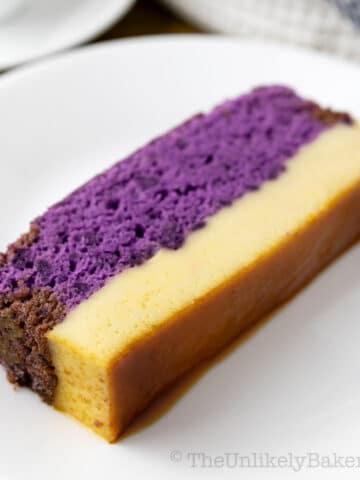
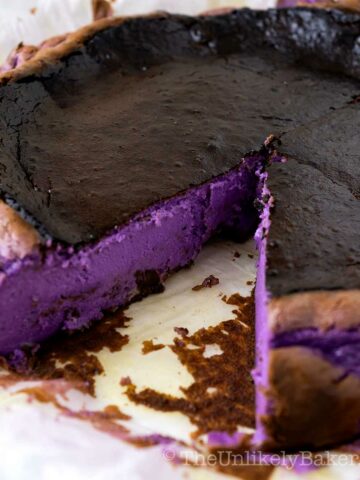
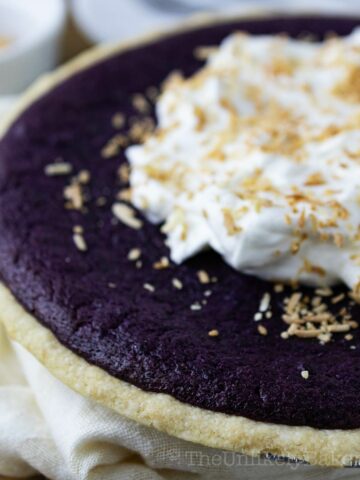
Yaal
Hi, can you please tell me the shelf life for this recipe
Jolina
Hi Yaal, your ube jam should be good up to a week kept in a covered container in the fridge. Enjoy!
Kim
It turned out great! It was fresh and tasty, and it also froze and kept well vacuum-sealed for two years (LOL)
Jolina
Two years? WOW! Thanks for the info. Glad you found a way to keep it for that long. Enjoy!
Maggie
Hi Jolina! I love the Ube ice cream that you get in the Asian stores.. and everything about the purple yam.. I want to try on my own to make the Ube Halaya and so bought frozen ube chunks from Asian Market as i dont get fresh.
I want to know to make the Ube Halaya once thawed should I boil the ube chunks first then grate the ube and cook it or can I thaw the frozen ube chunks grate it and cook it? Look forward to your reply. Thanks Maggie
Jolina
Hi Maggie, we don’t get those frozen chunks here so not entirely sure. Are they already cooked? Then I would just grate them. If not, you’ll need to boil them first. Enjoy!!
Maggie
Thanks Jolina! I dont think they are cooked it just says frozen so i’ll just boil them I guess.
Yang
Hi! What I used to do before is to use food processor or blender. In that way, you won’t taste the fiber that much. I process the cooked ube chunks with evap milk so that it’ll be easier for the food processor to blend them.
Jolina
Hi Yang! I tried using our blender one time and for some reason my halaya came out with a weird texture. This is my sign to try again. Thanks for the tip!
Chris
I do not have access to purple yam, just purple sweet potato. I can order Giron ube powder. How many ounces of powder should I use?
Thank you.
Jolina
Hi Chris, I don’t use ube powder but I did find this very useful article on how to rehydrate it. Hope it helps!
Taberu
Thank you for this recipe, it was easy to follow. Although, I tweaked it a bit, but still came out great. I used frozen ones, also used a blender to get a smooth texture, so throw in half of the grated ube and half of the evaporated milk. The other half was as is, so I still have the teeny tiny bits which I like.
Jolina
You’re welcome Taberu, glad you liked the uba jam! And thanks for sharing your tweaks 🙂
Lanvy
Hi! Did you use light or dark brown sugar? Excited to make this :))
Jolina
HI Lanvy, I use regular or dark brown sugar. Enjoy!